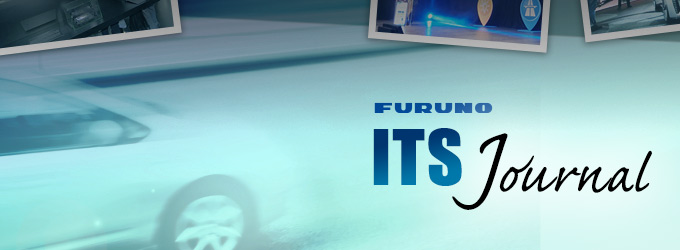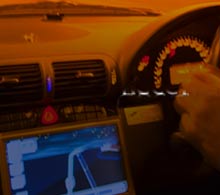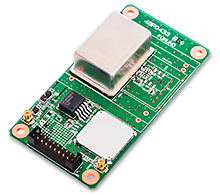Articles for ITS market "Return to Origin" directed towards the age of change, automatic operation and connectivity
"Driving pleasure" and "Driving fun"
There are three areas of technology: automatic operation, connectivity, and EV. MaaS (Mobility as a Service) integrates and commercializes these technologies.
In response to these changes, automobile manufacturers are rapidly responding to next-generation technologies and services by re-organizing their corporate strategies.
Meanwhile, other automobile manufacturers are trying to return to their origins. It is a movement to recapture the essence of vehicles, which is considered the "Driving pleasure"
For example Toyota's sports car the "Supra" and Lexus's crossover "UX" have been introduced. We can see the emphasis on "driving fun" while incorporating connectivity technology in both vehicles.
For example the joint development with BMW (Germany), which is Toyota's first created the fifth-generation "Supra".
In early December 2018, the Sodegaura Forest Race Way (Sodegaura City, Chiba Prefecture) hosted three "Supra’s", which were camouflaged to hide their appearance.
In the 1980s Supra was created as a derivative model of the Celica, called Celica XX (double ex). The latest fifth generation model is Toyota's top sports car..
The official announcement of the fifth-generation Supra will be on the press day of the North American Automobile Show (Detroit, Mich.) on January 14, 2019.
At this time the final test vehicle for mass production, called "mass production prototype" (final prototype) was test-driven however currently Toyota does not disclose detailed vehicle data. The only thing known is the engine is an in-line 6-cylinder turbo engine and the transmission is an 8-speed automatic.
The main feature of the fifth-generation "Supra" is the joint development with BMW of Germany which is Toyota's first. Specifically the vehicle chassis and engine are shared with BMW's Z4 sports car. The production is carried out at the Magnastear plant, a major European parts manufacturer in Austria. In other words all of the fifth generation "Supra" with Japanese specifications will be imported.
Toyota's collaboration and development with other companies have produced sports cars like the successful 86 and Subaru BRZ vehicles . Toyota's core market for sports cars is continuing to rely on Toyota’s future vision. However, for sports cars where sales volume has not grown significantly, Toyota would like to keep R&D costs as low as possible. In addition we would like to make the most of our marketing activities and keep Toyota's sense of "car love" very active at Toyota.
Nevertheless, the fifth generation "Supra" does not seem to be a mere sibling of BMW "Z4". The overall engine has a clear "Toyota color" indicative of a "Supra" design. Since the road surface was rather wet during the circuit driving, the vehicle ran well on the straight road while pushing the vehicle characteristics in the corners maintaining a maximum speed of about 170 km/h. When the accelerator pedal was depressed in the corner the vehicle understeered but was well controlled by counter steering. Of course it is a rear wheel drive vehicle (FR vehicle) with an in-line six-cylinder engine which is the "Supra" historical design.
But it is not difficult to drive and is very controllable. The maximum output is estimated to be around 350 horsepower with a maximum torque estimated at around 500 Nm. However the atmosphere in which drivers handle the car is very enjoyable for drivers when maneuvering the car.
Technically the active differential mechanism, which controls the torque distribution to the left and right rear wheels from 0 to 100% provides neutral steering characteristics and stabilizes the overall vehicle motion.
In order to transmit and receive driving conditions and customer data from the OBE to and from the cloud a DCM (data communication device) is also mounted on the Supra. Therefore the Supra is an advanced sports car. The utilization of connectivity technology is inevitable on new models from Toyota. However in terms of "enjoying driving," the connectivity seems to be a backup technology for safe driving.
Creative Urban Explorer. Lexus "UX"
The week after the "Supra" test ride, he participated in the media test ride of Lexus "UX" from the Kawasaki port area in Kanagawa Prefecture as the starting point.
In March 2018 the UX was debuted worldwide at the Geneva Motor Show in Switzerland. The Lexus brand is a crossover entry model that followed the LX, RX, and NX.
The lineup of engines includes a series 4-cylinder 2.0-liter UX200 and a 2.0-liter hybrid UX250h. In addition to a front wheel drive vehicle (FF), it is also available in a four-wheel drive vehicle (AWD) that motorizes the rear wheels.
The product concept is Creative Urban Explorer. People who live in their 30s and 40s in urban areas and whose total annual income exceeds 10 million yen typically go to the sea or mountain on short weekend trip. With such an image, they went to the Boso region of Chiba Prefecture and the Hayama region of Kanagawa Prefecture for a test ride of about 150 km for each round trip.
The most surprising thing was the quality of the hybrid vehicle. By optimizing the motor drive and the control of the engine both excellent and even acceleration is achieved without any extreme feeling of engine torque. The vehicle body, using advanced welding technology easily controls the power and torque.
As a result, driving on both highways and secondary roads is very pleasant and quick.
The interior is full of design cues that incorporate Japanese taste and the latest equipment is linked with connectivity technology. Again however the connectivity technology seemed to be a backup technology for driving enjoyment.
Does the "ownership to sharing" focus on low-to medium-priced vehicles?
Currently I have been able to test Toyota's "Supra" and Lexus's "UX" and feel more connected to the driving experience once again.
Do you think the desire to own cars will be reduced in the future?
Many consultant-related companies expect to further develop the sharing economy and move from "ownership" to "sharing" of cars in the future through technological fields development such as automatic operation, connectivity, and EV.
Such trends seem to be now centered on low-to medium-priced cars, with less "continuing ownership" in senior sports cars and premium brands.
On the other hand, European manufacturers such as Mercedes and Audi have proposed not to own luxury cars, for example by commercializing new cars with monthly flat payments.
How will we move from ownership to sharing?
By closely monitoring the current market trends.
Writer introduction

Mr. Kenji Momota Automotive journalist
His major is the world automotive industry and he is also familiar with the energy industry, IT and the aging society problem as the related fields. He acts around the world based in Japan and USA and writes for the general magazines, the technology journals and the automotive related media etc.
He is also commentator of motor race and world's motor show on TV program based on his career of the driver of Indy Racing League and NASCAR. In recent years, he has been covering about a paradigm shift from developed countries to developing countries, the motorized vehicle like EV and the telematics.
FURUNO ITS Journal
Click here for the latest articles after 2022 (in Japanese)2022
- The "realistic" self-driving roadmap shown by the Japanese government and a hands-on report on the latest Subaru EyeSight X
- Will FCVs (Fuel Cell Vehicles) Become Popular? ~New Movement in Toyota and Honda~
- The 'Complete' online sales of new cars start in Japan. Will this new way of buying cars take root?
- Many Firsts! On-Site Report from Tokyo Auto Salon 2022 - The author, who knows what goes on behind the scenes, looks back on 40 years of history. -
2021
- "Moving toward zero traffic fatalities for four-wheeled and two-wheeled vehicles globally in 2050" ~Experience on Honda's latest safety technologies~
- Tsuneishi Shipbuilding's building and DX, an exclusive visit to the main factory
- Japan's Smart City: New Moves toward Practical Use
- When will self-driving buses (service cars) be put to "full-scale" practical use?
- Utilization vehicle data during disasters
- Toyota-led Connected Technology to Transform Commercial Vehicle Business -From light trucks to large trucks and buses-
- Toyota enters the connected car "Personalization" business
- Japanese automakers' carbon-neutral strategies swept up in ESG investment
- Drive experience of the latest autonomous vehicle models and advanced driving support systems
- Will carbon neutrality accelerate the trend to strengthen LCA (Life Cycle Assessment)?
- Semiconductor shortage exposes realities of the automotive industry
- Online Autonomous Driving Contest Enhancing development of Human Resources
2020
- What happens to CASE when gas cars are banned in Japan?
- When will Flying Cars be launched?
- Expectation vs. reality:Autonomous Driving in Japan
- V2X, Becoming increasingly important in autonomous driving
- Technology of Subaru “EyeSight X”
- Lifestyle-oriented French cars gain popularity in Japan
- Human-oriented smart cities are wanted
- MaaS and CASE, how would automotive industry change after COVID-19?
- The beginning of virtualization era, triggered by COVID-19
- Trend of EV shift and consumer demands
- TOYOTA Press conference about ADAS - Releasing algorithm for "sudden acceleration suppression during attempted sudden acceleration" free of charge -
- The Japanese automotive industry in 2020 - 3 turning points -
- "Using a smartphone while driving" and "Level 3 automated driving"
2019
- Motor show business model is at a turning point - Tokyo Motor Show Report -
- Commercialization and monetization of MaaS - ITS World Congress Singapore Report -
- Android Automotive pays attention to V2X - Report from the Frankfurt Motor Show 2019 in Germany -
- Automobile Distribution Revolution and DCM (Data Communication Module)
- Connected business potential and newly proposed "eMaaS" by Honda
- 5G services for practical use are multiplying
- Connectivity technologies attracting attention due to frequent traffic accidents
- Shanghai Motor Show report -SUV, EV, Automated car & 5G-
- Drone Business roadmap and updates to Michibiki (Quasi-Zenith Satellite System)
- MaaS (Mobility as a Service) "town development." Full-scale promotion for a national project
- CES organizer states "Data Period in 2020s." Transformation of the Automotive Industry in CES, US "-CES2019 Report-"
- "Return to Origin" directed towards the age of change, automatic operation and connectivity
2018
- New proposal for Private Car Automated Driving Level and other Hot 5G Technology Topics
- Standardized EV charging infrastructure concerns in Europe, US, Japan and China - Kobe EVS 31 field report -
- Touring a pure car carrier and a test drive of the latest hybrid car
- Planning stage products are exhibited at the newly established visualized mobility service "TOYOTA MOBILITY SHOWROOM".
- Potential “Community Car-share” program promoted by local residents
- CES Asia Report 2108
- Companies attempt new Vehicle-to-Infrastructure communications, including traffic volume measurements and vehicle positioning. -ITS Asia Pacific Forum in Fukuoka-
- Geneva show in Switzerland. Flying cars and MaaS (Mobility as a Service) were hot topics.
- EV (Electric Vehicle) proposals by country
- MaaS competition through service mobilization, M & A and technical field collaboration is accelerating. - The CES 2018 Report -
2017
- Big data’s initiative and fight for the automotive industry. Cooperation among companies becomes increasingly important.
- Connected car and road-to-vehicle communication automatic operation
- ETC (Electronic Toll Collection) and ETC2.0. Current situation and projected future
- Rapid development of sharing economy
- Germany is first to recognize level 3 automated driving
- ITS EU 2017 Field Reports -Automatic Operation and the eCall-
- From Infotainment to ITS, the competitive area is spreading in the car big data industry.
- GTC (GPU Technology Conference) Report and the de facto standardization of AI (artificial intelligence)
- Renesas' new challenge! "e-AI Solution" and "Renesas Autonomy"
- The Automobile industry is shifting from a manufacturing industry to a service industry.
- The movement toward accident countermeasures for aging drivers in Japan
- Fusion of ride sharing and fully automated driving is advancing in the USA.
2016
- Overview of the Quasi-Zenith Satellite System (QZSS) and advancements toward full-scale practical use including the Tokyo Olympic Games - G-space EXPO 2016 report-
- Japan’s automated driving project "SIP-adus" will be a large demonstration experiment.
- The International Home Care & Rehabilitation Exhibition. There were many car manufactures with exhibits booths at this show.
- Japanese car manufacturers starting to concentrate on strengthening the ADAS system
- A new movement of legislation for autonomous cars
- Cyber Security and “AGL”, the new OS for automotive are hot topics in the connected car industry
- “High precision 3D map” the key future of autonomous car and pedestrian dead reckoning
- Chinese “BAT” is accelerating their business in the EV (Electric Vehicle) market
- Tesla's original connection to Taiwan and the new transportation system technologies.
- "The main topic" of the Geneva Motor Show was how to strengthen "pedestrian protection"
- The probe data business is getting more competitive
- Reporting directly from the 2016 CES show "Data services will soon become the main revenue source of automotive industry"
2015
- Do the automated driving systems need the GNSS (Global Navigation Satellite System) ?
- ETC Version 2.0 is coming soon. A new service was announced at the Tokyo Motor Show and the possibility that is could be used as a device for older drivers.
- "Connected Horizon" and "eHorizon". Germany's leading parts supplier accelerates strengthening of "Big Data" for business



 Vehicle model "A90" and test vehicle of Toyota "Supra" with official debut in January next year
Vehicle model "A90" and test vehicle of Toyota "Supra" with official debut in January next year Test driving is held at Sodegaura Forest Trace Way.
Test driving is held at Sodegaura Forest Trace Way. New Lexus crossover "UX"
New Lexus crossover "UX" Explanation of UX vehicles is held at a fashionable restaurant in the Tokyo Bay Area.
Explanation of UX vehicles is held at a fashionable restaurant in the Tokyo Bay Area. UX interior
UX interior GPS/GNSS Receiver&Chips and Modules (positioning and timing)
GPS/GNSS Receiver&Chips and Modules (positioning and timing)